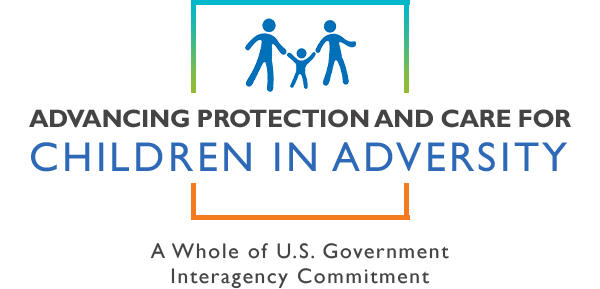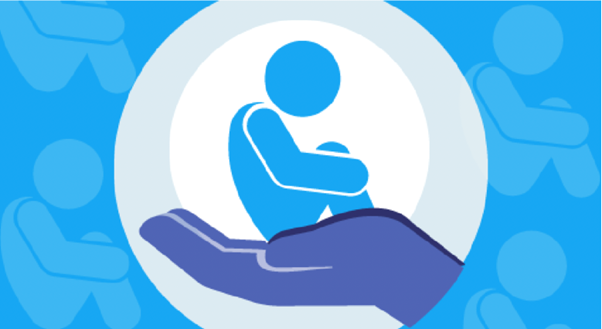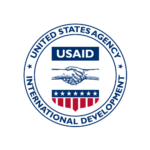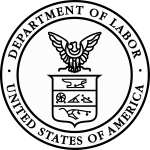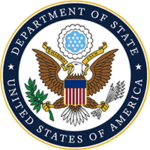MAKING SAFEGUARDING CHILDREN A PRIORITY
Written by: Sarah Blakemore
January 2023

Keeping Children Safe’s Child Protection Portal
Child safeguarding is the responsibility that all organizations have to protect children from abuse by their staff, programs, operations, or partners.
Eleven-year-old Alina* and her mother escaped the conflict in Ukraine with just a small rucksack of clothes and a photograph of the home and father they were forced to leave behind. After an exhausting and terrifying journey across the border, Alina was relieved when friendly volunteers offered them food and a bed for the night. But the feeling that she was finally safe disappeared later that evening, when one of the volunteers offered her gifts and money to spend the night with him. When she refused and said she would report him, he told her no one would believe her and she would be thrown out of the shelter and onto the streets if she didn’t keep quiet.
In every country in the world, children in adversity are at risk of violence, exploitation, abuse, and neglect. This can come in multiple forms. Often individuals actively target child- and youth-serving organizations including daycare centers, sports clubs, schools, faith-based institutions, not-for-profits, or peacekeeping forces to gain access to children who fall victim to their cruelty. In other cases, abusers simply take advantage of the situation, the lack of oversight, and the extreme imbalance of power between trusted adult and child.
The most vulnerable children are most at risk of abuse and exploitation–and least likely to have someone to turn to for help.
These are children who experience discrimination or marginalization while separated from their family and community. Children with disabilities are almost four times more likely to be subjected to violence and neglect. Children fleeing conflicts and crises, like those in Ukraine right now, may be subjected to devastating abuse at every stage of their journey.
This means that a critical part of preventing violence against children is ensuring that organizations set up to help and protect children don’t actually put them at greater risk of harm.
STEPS TO PROTECT
Child safeguarding is the responsibility that all organizations have to protect children from abuse by their staff, programs operations, or partners. And while the majority do everything they can to keep them safe, too many have critical gaps in child safeguarding that put them at risk. As an absolute minimum every organization should have:
- A child safeguarding policy explaining how the organization will do all it can to keep children safe from exploitation and abuse.
- Initiatives to ensure the child safeguarding policy is communicated to children, so they understand their right to be safe and how to report abuse if it happens.
- Safe ways for children and caregivers to report abuse.
- A commitment by leaders to always act in the best interests of the children they work with and for.
- Background checks to stop child abusers getting jobs or volunteering with children.
- Mandatory child safeguarding training for all staff and volunteers.
- Written standards for acceptable and unacceptable behavior toward children and for children toward other children.
- Appropriately trained and experienced Child Safeguarding Focal Points.
Child safeguarding is a key priority for the U.S. Government’s Advancing Protection and Care for Children in Adversity (APCCA) Interagency Partners.
It is the responsibility of each agency to strengthen policies, procedures, and understanding of safeguarding principles for every staff member and every partner who accepts U.S. government funding.
Safeguarding is integrated throughout all APCCA initiatives including:
- Partnering with Keeping Children Safe to develop open-source resources on child safeguarding to be disseminated to USAID.
- Training an interagency cadre of child safeguarding trainers and developing tools and resources to support them.
- Technical child safeguarding support and advocacy with and for USAID partners across the world.
Fortunately for Alina, a trained Child Safeguarding Focal Point in the volunteer organization overheard the conversation and the individual was removed and reported to the police. It turned out that he was a registered sex offender who had joined the group and traveled to the region specifically to target children in extremely vulnerable circumstances. It was a stark reminder that the only way to protect children like Alina is through active implementation of safeguarding measures– not as an afterthought, but as a priority across every initiative we put into place. By combining thorough training, resources, and advocacy that directly support safeguarding practices, children like Alina will have the opportunity to lead healthy lives unencumbered by abuse, neglect, or exploitation. That is their right.
Sarah Blakemore is the CEO of Keeping Children Safe, an independent global not-for-profit focused on safeguarding children; a Visiting Research Fellow at the University of Reading, School of Law; and a Doctoral Researcher at Brunel University London.
*This name has been changed to protect the child’s identity.
